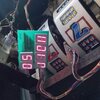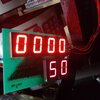Hi, I had this old 1990ish display board on an old retro machine- where some of the segments were faulty. I checked all the wiring and drive components.
I couldn't find any datasheets for the original spec so I tried some from another display board from 1997... pinouts were the same. It works OK now, its brighter than the original x2 led left on there.
Will it be OK to continue using and is there anyway I can work out the value needed if it's incorrect? Not sure if there's any extra draw through my main board or anything like that.
Thanks
I couldn't find any datasheets for the original spec so I tried some from another display board from 1997... pinouts were the same. It works OK now, its brighter than the original x2 led left on there.
Will it be OK to continue using and is there anyway I can work out the value needed if it's incorrect? Not sure if there's any extra draw through my main board or anything like that.
Thanks



